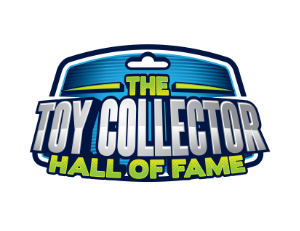All Barbie Movies In Order For Fans
If you’ve ever wondered where to start with Barbie's cinematic journey, it’s easy to get lost in her ever-growing list of adventures. You’ll discover more than just ballgowns and fairy tales; each movie introduces new characters, magical lands, and evolving stories. From Barbie’s earliest animated beginnings to her more recent world-spanning escapades, there’s a surprising depth to explore. As you follow her transformation through each film, you might notice unexpected patterns emerge.
Early Barbie Movies: The 1980s Specials
In the 1980s, Barbie's transition into animated film began with two significant specials: Barbie and the Rockers: Out of This World and Barbie and the Sensations: Rockin Back to Earth.
These films, each lasting approximately 22 to 25 minutes, marked the inception of Barbie's animated journey, positioning her as a music icon engaged in diverse and imaginative narratives.
Despite their relatively brief durations, these specials played a crucial role in establishing the foundation for Barbie's future in film. They introduced essential themes such as friendship and creativity, which became central components in subsequent Barbie movies.
By portraying Barbie in various musical contexts, these films contributed to her character development and provided audiences with relatable narratives that would resonate in later productions.
The Rise of CGI: Barbie’s Animated Beginnings
In 2001, Barbie made a significant transition in her animated presence with the release of Barbie in the Nutcracker, marking the debut of her first full-length CGI film. This advancement signified a notable evolution in the way Barbie's stories were told, utilizing CGI technology to create more detailed and dynamic visuals.
This technology allowed for enhanced representations of fantasy environments and character movements, resulting in a more immersive viewing experience.
Following Barbie in the Nutcracker, a series of CGI films such as Barbie as Rapunzel and Barbie of Swan Lake were produced, further establishing the visual and narrative style of the franchise.
Between 2001 and 2009, a total of twelve CGI films were released, each contributing to the expanded storytelling potential of the character.
These films not only showcased advancements in animation but also allowed for diverse narrative themes and character development, effectively reaching a new generation of viewers and solidifying Barbie's place in animated film history.
Classic Fairy Tales Reimagined
Many animated films have adapted well-known fairy tales; the Barbie movie franchise offers a distinct perspective on these stories with a focus on individual themes.
For instance, Barbie in the Nutcracker incorporates motifs of love and bravery, while Barbie as Rapunzel emphasizes creativity. Additionally, Barbie of Swan Lake examines concepts of transformation and courage.
In Barbie as The Princess and the Pauper, the narrative explores themes of friendship and identity, marking the franchise's first original musical adaptation.
These reimagined versions utilize animation to present familiar narratives, highlighting Barbie's central character traits and values.
Exploring the Fairytopia Trilogy
The Fairytopia Trilogy, featuring "Barbie: Fairytopia," "Mermaidia," and "Magic of the Rainbow," follows the character Elina, a flower fairy. The trilogy illustrates themes such as self-belief, friendship, loyalty, and teamwork within a fantasy setting.
In the first film, "Barbie: Fairytopia," Elina embarks on a journey where she discovers the importance of believing in oneself to overcome challenges. This theme of self-empowerment is central to her character development.
The second installment, "Mermaidia," shifts the narrative focus to friendship and loyalty as Elina ventures underwater to help a mermaid friend in need. This film emphasizes the significance of supportive relationships and the sacrifices one may make for others.
The concluding film, "Magic of the Rainbow," highlights teamwork and perseverance, demonstrating how collective efforts can restore hope to Fairytopia.
The trilogy as a whole presents a cohesive narrative exploring personal growth and moral values, reinforced through its visual storytelling.
Barbie as a Princess: Royal Adventures
Barbie's portrayal in various royal-themed narratives serves to highlight themes of self-discovery and empowerment, largely through the lens of princess roles. For instance, in Barbie as The Princess and the Pauper, the narrative encourages individuals to pursue their aspirations and embrace their authentic selves.
Similarly, Barbie as Rapunzel integrates elements of love and creativity as catalysts for personal development within a royal context. The film Princess Charm School focuses on values such as bravery, kindness, and friendship, advocating for the idea of empowerment in diverse royal circumstances.
Additionally, Barbie in the 12 Dancing Princesses emphasizes the importance of sisterhood. Recent films aim to merge traditional royal attributes with contemporary values, which reflects a shift in the representation of princesses and underscores an evolving narrative of empowerment associated with these characters.
Standalone Animated Stories
Many animated stories, such as those in the Barbie franchise, offer self-contained narratives that don't require prior viewing of earlier installments. This format allows audiences to engage with any of the 28 standalone films, each featuring its own unique storylines and characters. Common themes across these narratives include self-discovery and the significance of friendship.
For instance, films like “Barbie in the Nutcracker” and “Barbie as Rapunzel” present distinct plots while retaining recognizable characters. The stories are designed to be independent, meaning viewers can enjoy them without needing any background knowledge.
However, there are exceptions like the Fairytopia trilogy, which builds on interconnected storylines. Most standalone titles consistently focus on independent narratives that encapsulate themes of fun, personal growth, and adventure, making them accessible to a broad audience.
This approach to storytelling emphasizes thematic continuity over chronological progression, allowing audiences to explore diverse experiences without the constraint of sequential viewing.
Barbie’s Magical Transformations
The various Barbie movies present a consistent theme of magical transformations that significantly contribute to character development and narrative progression.
In "Barbie Fairytopia," the transformations symbolize inner growth and the significance of self-belief, which reflects broader themes of empowerment and resilience.
"Barbie as The Island Princess" emphasizes the role of nature and interpersonal relationships in shaping one’s identity and understanding of self.
Furthermore, "Barbie in a Mermaid Tale" explores the acceptance of one's heritage, presenting the duality of magical and athletic attributes through the character’s experiences.
In "Barbie: Princess Adventure," the focus is on the evolving dynamics of friendships, demonstrating how these relationships facilitate personal growth.
Musical Moments in Barbie Films
Barbie movies are known for their incorporation of musical numbers, which play a significant role in both advancing the plot and deepening character development. In films like Barbie as The Princess and the Pauper and Barbie and the Diamond Castle, original songs are integrated into the narrative, providing insights into characters' emotions and motivations.
Similarly, in fantasy-themed films such as Barbie: Fairytopia, the music serves to enhance the immersive quality of the story, drawing viewers into the fantastical settings.
Typically, each Barbie film features between three to six original musical tracks, effectively combining storytelling with musical performance.
Recent entries in the Barbie franchise, such as Barbie: Princess Adventure, have adapted to contemporary music trends, ensuring that the soundtracks remain fresh and appealing to the target audience.
This blend of music and narrative continues to be a defining characteristic of Barbie films, contributing to their overall significance in animated children's cinema.
Sisterhood and Family Themes
Unity is a prevalent theme in various Barbie movies, particularly emphasizing the significance of sisterhood and familial connections. For instance, Barbie in the 12 Dancing Princesses illustrates how collaboration and familial love can empower individuals to overcome obstacles.
Similarly, Barbie and the Diamond Castle underscores the value of friendship, highlighting how supportive relationships can be essential to personal growth and resilience.
In Princess Charm School, the characters’ experiences reflect the importance of friendship, showcasing how collective efforts can lead to the resolution of conflicts.
The film Barbie & Her Sisters in a Great Puppy Adventure further emphasizes family bonds, demonstrating how shared challenges can enhance relationships among siblings.
Through these narratives, Barbie films consistently promote themes of loyalty, empowerment, and kindness, which serve to reinforce the importance of supportive connections in both familial and friendship contexts.
The Kelly Dilemma in Barbie Lore
In the context of Barbie lore, there exists a notable distinction concerning Barbie's younger sister.
Initially introduced as Kelly, this character was later renamed Chelsea in 2010 by Mattel as part of a broader initiative to modernize the Barbie family. This rebranding aimed to enhance Chelsea's character identity and reflect contemporary values in storytelling.
Chelsea has since taken on a more significant role in various Barbie films and series, consistently emphasizing themes of sisterhood and familial support.
The shift from Kelly to Chelsea can be seen as Mattel's strategy to maintain relevance within evolving cultural contexts while preserving the established relationship dynamics between Barbie and her younger sister.
This transition illustrates the company's efforts to adapt its storytelling to appeal to new generations, ensuring that the character of Chelsea resonates with current audiences while still honoring the foundational themes of family and support that have long been associated with the Barbie brand.
The evolution of this character thus serves not only to update the franchise but also to keep its core messages intact.
Mermaid Tales: Underwater Adventures
The Mermaid Tales series features Barbie transitioning from land-based narratives to an underwater setting, which introduces new themes and character dynamics. In “Barbie in a Mermaid Tale,” the central character, Merliah, is portrayed as a surfer who discovers her mermaid heritage and embarks on a mission to save her mother, the queen of Oceana. This film explores themes of identity and family responsibility.
The sequel, “Barbie in Mermaid Tale 2,” follows Merliah as she engages in a surfing tournament while simultaneously trying to recover a stolen magical necklace. This dual-focus narrative allows for the examination of balance between personal ambition and communal duty.
Both films are characterized by their vibrant animation and colorful underwater environments, which contribute to their distinct aesthetic within Barbie's filmography. Furthermore, they emphasize lessons related to courage, self-acceptance, and the importance of community, which are relevant both in the context of children's entertainment and broader themes of personal growth.
Thus, the Mermaid Tales series adds a notable dimension to the overall landscape of Barbie films.
Barbie’s Animal Friends and Sidekicks
Barbie's films frequently feature a variety of animal companions and sidekicks that play significant roles in the narratives. These characters, such as Blissa the cat and Taffy, Barbie's dog, contribute various elements of loyalty and companionship to the stories.
Taffy is a recurring presence, often embodying the theme of friendship and support that's central to Barbie's character. In movies that feature magical or fantastical settings, the introduction of unique animal friends extends the narrative possibilities.
For instance, Dolphin Magic includes aquatic animals that assist Barbie in unraveling mysteries, thereby enhancing the storytelling by incorporating elements of collaboration and teamwork.
The relationships between Barbie and her animal companions serve to reinforce themes of loyalty and companionship, which are prevalent throughout the films.
These dynamics not only provide comic relief and emotional depth but also reflect the importance of supportive relationships in the broader context of the narratives.
Dreamhouse Adventures Timeline
Beginning in 2017, the Dreamhouse Adventures timeline represents a significant shift in the production of Barbie movies, characterized by a modern animation style and narratives that resonate with contemporary society. This change is evident from the outset with Barbie: Dolphin Magic, which introduces the Dreamhouse universe.
These films are made available exclusively on streaming platforms, such as Netflix, and are structured around cohesive storylines that center on Barbie and her family.
Recent films like Barbie: Princess Adventure and Big City, Big Dreams emphasize themes of friendship, adventure, and personal development.
This timeline offers a refreshing take on the Dreamhouse series, aiming to provide relatable and modern experiences for its audience. The strategic focus on continuity and updated story arcs reflects a broader trend in animated content, catering to evolving viewer expectations and societal norms.
Teenage Dreams: The Barbie Diaries Era
The Barbie Diaries era represents a significant phase in the evolution of Barbie films, characterized by its focus on relatable teenage experiences and challenges. This era sees Barbie navigate issues common to adolescence, such as navigating crushes, dealing with high school rivalries, and experiencing the complexities of friendship.
The narrative approach in films like "Fashion Fairytale" and "Fairy Secret" underscores themes of self-discovery and empowerment, which are particularly relevant to adolescent viewers. By portraying realistic scenarios, the Barbie Diaries provides a platform for discussions around important social dynamics faced during teenage years.
The emphasis on personal growth and the importance of friendships can resonate with audiences, potentially serving as a reflection of their own challenges and triumphs.
Unique Holiday and Seasonal Specials
Barbie's holiday and seasonal specials offer a reimagined take on traditional stories and themes. For instance, Barbie in A Christmas Carol presents a narrative that emphasizes the values of kindness and compassion during the holiday season. This adaptation serves to both entertain and impart moral lessons relevant to contemporary audiences.
Similarly, Barbie Presents: Thumbelina illustrates a springtime narrative centered around themes of friendship and courage, as the character of Thumbelina embarks on a journey to find her identity and place in the world. This storyline reinforces the importance of self-discovery and resilience, which are applicable to various life stages.
Additionally, A Perfect Christmas features Barbie and her sisters encountering unexpected challenges during the holiday, ultimately highlighting the significance of family and adaptability in the face of change.
These specials are characterized by their relatively short runtimes and clear messaging, making them accessible and suitable for a wide audience. Their ability to incorporate relevant themes into relatable narratives contributes to their continued popularity as seasonal viewing options.
Barbie and Ken: Iconic Duos
Barbie and Ken have been significant figures in pop culture since their introduction in 1961. Their partnership exemplifies a blend of camaraderie and empowerment. In various media, including films such as "The Barbie Diaries" and "Fashion Fairytale," their interactions often mirror relatable teenage experiences. This portrayal emphasizes the themes of honest communication and mutual support, which are essential elements of their relationship.
Ken's character is often depicted as a supportive partner, illustrating concepts of equality and mutual respect within their dynamic.
Recent live-action adaptations continue to explore these themes, reflecting contemporary values regarding relationships and connection. Overall, the enduring popularity of Barbie and Ken can be attributed to their ability to resonate with audiences on issues of friendship and empowerment.
This ongoing relevance speaks to the broader cultural discussions surrounding these concepts in society.
Magical Realms and Fantasy Worlds
The Barbie movie franchise presents a series of animated films that explore various fantasy realms. These movies depict diverse settings such as Fairytopia, Mermaidia, and other enchanted locations, which are populated with fantastical creatures and characters.
Each film typically features central themes of friendship and collaboration, where Barbie and her companions work together to navigate challenges. The narratives often emphasize values such as bravery, kindness, and the importance of self-discovery amidst adversity. For example, "Barbie of Swan Lake" illustrates the significance of courage and compassion through its storyline.
The animation quality and musical scores are notable elements that enhance the viewing experience, drawing audiences into the vibrant worlds created in each film.
The combination of visual storytelling and thematic depth contributes to the franchise's appeal among its target demographic, primarily young viewers.
Sporting Spirits: Athletic and Adventure Themes
The Barbie movie franchise encompasses a range of themes, including those focused on athleticism and teamwork.
Films such as Barbie: Spy Squad highlight action-oriented narratives through engaging storylines featuring daring missions and athletic stunts, emphasizing the importance of collaboration among characters.
Similarly, titles like Barbie in Rock 'N Royals and Barbie & Her Sisters in the Great Puppy Adventure incorporate competitive elements that reflect the values of agility and cooperation in pursuit of shared goals.
Moreover, in Barbie in a Mermaid Tale, activities such as surfing and swimming serve to illustrate the connection between sports and recreation, further emphasizing the theme of physical engagement in the narrative.
Spinoffs and Recurring Characters
The Barbie movie franchise incorporates a network of recurring characters and interconnected narratives, which contributes to viewer engagement and continuity across its various films. Central characters such as Barbie, Ken, and Raquelle appear in multiple installments, particularly within the Adventures of Barbie, Ken, and Raquelle series. This structure allows for character development and audience familiarity.
Spinoffs, such as the Fairytopia trilogy, extend the thematic exploration of magic and friendship while introducing consistent characters that enhance the franchise's appeal.
The Mermaid Tales series delves into underwater settings while emphasizing themes of camaraderie, aligning with the franchise's overarching messages. Similarly, films like Diamond Castle focus on cooperation as a critical element of the storyline.
Notably, crossover events in movies such as Princess Adventure illustrate the evolving dynamics between characters, demonstrating a deliberate effort to maintain continuity and relatability.
This interconnected approach not only enriches the narrative landscape of the Barbie movie universe but also fosters a stronger connection with its audience by building on established character relationships and themes throughout the series.
Modern Storytelling: The Netflix Shift
The introduction of Barbie movies on Netflix in 2017 represented a significant development for the franchise, shifting the distribution model from physical DVDs to streaming services. This transition allowed for a new approach to storytelling, incorporating updated animation techniques and narrative structures that resonate with contemporary audiences.
Since then, all new Barbie films have debuted exclusively on streaming platforms, granting viewers immediate access to content and enabling the exploration of more complex storylines.
This era has also established a greater emphasis on narrative continuity among Barbie films. Titles such as Dolphin Magic aren't standalone products; rather, they're integral components of a larger, interconnected storyline.
This continuity facilitates a deeper understanding of character development and relationships within the Barbie universe, enhancing the viewing experience by creating a sense of consistency across various films. Overall, the shift to Netflix has contributed to a more modernized and cohesive presentation of Barbie's adventures.
Barbie & Her Sisters: Teamwork and Fun
The "Barbie & Her Sisters" movie series emphasizes themes of teamwork and familial bonds between Barbie and her sisters. Each film illustrates how the sisters utilize their individual strengths to overcome various challenges.
In "Barbie: The Great Puppy Adventure," the narrative revolves around the sisters working together to locate their lost puppies, underscoring themes of loyalty and collaboration.
Similarly, "Barbie & Her Sisters in a Pony Tale" features a horseback riding adventure, where each sister contributes in a significant way to the mission at hand.
The films include musical elements and colorful visuals that enhance the storytelling experience while reinforcing the idea that collective effort can lead to success.
Notable Villains and Antagonists
Barbie's narratives frequently involve challenges introduced by a range of villains and antagonists that serve as obstacles to the protagonists. These characters, while often embodying traits of traditional villains, can also display complexity in their motivations and actions.
For instance, in Barbie in the Nutcracker, the evil queen utilizes manipulative tactics to undermine the protagonists, which serves to highlight themes of courage and resilience.
In Barbie as Rapunzel, Gothel presents a more nuanced antagonist, showcasing how control and restriction can impact individual freedom and creativity.
Duchess Rowena in Barbie as the Island Princess represents a pursuit of power, reflecting themes of ambition and rivalry, as her actions aim to elevate her standing at the expense of others.
Lydia, from Barbie and the Diamond Castle, epitomizes the way antagonistic behavior can destabilize relationships by fostering mistrust among friends, thus illustrating the potential consequences of divisive tactics.
Conversely, in Barbie: Princess Adventure, the character of Princess Amira demonstrates that not all antagonistic actions stem from inherent evil; misunderstandings can lead to conflict, suggesting a need for resolution through communication and empathy.
Animation Styles Through the Years
The evolution of Barbie movies highlights significant advancements in animation technology and techniques over the years. The initial films predominantly utilized traditional animation methods, but the release of “Barbie in the Nutcracker” represented a pivotal shift towards CGI animation, allowing for a more dynamic visual presentation.
By the mid-2000s, the animation industry had made substantial progress, evident in the Barbie films through the adoption of brighter color palettes, smoother character movements, and expressions that better conveyed emotional depth.
As the franchise transitioned to Netflix, the animation quality continued to improve. This shift allowed for more vibrant and contemporary designs, offering audiences a refined visual experience.
The focus on enhancing the visual aspects was balanced with the consistent theme of family-friendly narratives, demonstrating how advancements in animation can complement storytelling. Overall, the progression of animation in Barbie films reflects broader trends in the industry, aligning technological innovation with creative storytelling.
Rockstar Barbie: Music and Fashion
Barbie's rockstar persona is characterized by a significant interplay between music and fashion, as evidenced in various films. In Barbie and the Diamond Castle, music serves as a foundational element, with original songs integral to both the storyline and the portrayal of Barbie as a rockstar figure.
In contrast, Barbie: A Fashion Fairytale emphasizes fashion as a tool for creativity and problem-solving, as Barbie utilizes her style to revitalize a fashion emporium.
The film Barbie in Rock ‘N Royals explores themes of self-discovery through music while featuring contemporary, bold fashion choices that reflect Barbie's dynamic character.
Additionally, Barbie: Spy Squad merges elements of stylish action with musical performance, further illustrating the longstanding connection between music and fashion within Barbie's narrative universe.
The Evolution of Barbie’s Friends
Friendship is a central theme in Barbie's cinematic universe, with each film introducing new characters that contribute to the dynamics of Barbie's relationships. Over the years, characters such as Teresa and Midge have played significant roles in broadening Barbie's network of friends, offering diverse perspectives on friendship.
The introduction of Chelsea signifies a shift towards portraying familial relationships, emphasizing the importance of bonds beyond mere friendships.
Recent films, such as Barbie: Big City, Big Dreams, have included characters like Brooklyn Barbie, which adds to the representation and narratives within the franchise. These developments reflect a broader trend towards inclusivity and recognition of diverse backgrounds.
Furthermore, themes of empowerment often emerge through collaborative efforts in storylines, as demonstrated in Barbie and the Diamond Castle, where cooperation among female friends is crucial to the plot.
Additionally, characters like Ken and Raquelle contribute to the complexity of Barbie's social interactions, mirroring real-world friendships and relationships. This evolution in character dynamics not only enhances the storytelling but also serves to engage audiences by reflecting contemporary social norms and values surrounding friendship and collaboration.
Streaming and Rental Platforms Guide
Barbie movies have evolved over the years, and the distribution of these films varies based on their release dates. Streaming services present a primary option for viewing recent titles; specifically, Barbie movies released after 2017 are exclusively available on Netflix. This situation establishes Netflix as a primary platform for current Barbie content.
Conversely, earlier Barbie films, produced between 2001 and mid-2017, can typically be accessed through rental services such as Amazon Prime Video, Google Play, and Apple TV, where the rental price is generally around $4. Some titles may have a higher cost due to their popularity or availability.
Additionally, Barbie's official YouTube channel offers select films for free streaming, contributing to wider accessibility.
For individuals interested in physical media, used copies of Barbie movies, including DVDs and VHS tapes, can often be found at secondhand stores and libraries. Collectors may find value in these formats, despite the increasing prevalence of digital streaming.
This reflects a broader trend in media consumption where physical formats coexist with digital streaming options.
Comparing Animated and Live-Action Barbie
Barbie's legacy originated with animated films, which have primarily catered to a younger audience through engaging narratives that center on themes of friendship, adventure, and music. These films typically present standalone stories that incorporate moral lessons suitable for children.
In contrast, the recent introduction of a live-action film represents a noticeable shift for the franchise. This adaptation aims to target an adult demographic with a narrative that promises to explore more intricate and relevant societal themes.
This transition highlights a broader strategy to increase Barbie’s relevance and appeal, moving from the family-friendly entertainment of animated features to more complex storylines that may resonate with an older audience. This shift indicates a strategic attempt to broaden the brand's reach and engage with viewers who seek deeper narratives.
Global Cultures in Barbie’s Universe
Barbie movies have increasingly incorporated global cultures into their narratives, presenting a range of settings that reflect diverse traditions and lifestyles. The films feature various locales, from castles inspired by European folklore to coastal communities influenced by tropical aesthetics. Such choices reflect a commitment to showcasing cultural diversity within animated storytelling.
The inclusion of characters from a range of backgrounds, such as Brooklyn Barbie in Big City, Big Dreams, indicates a shift towards more inclusive representation. This choice demonstrates an effort to acknowledge and respect different cultural identities within the Barbie franchise.
Moreover, the plots of these films often draw on universal themes from fairy tales and legends from around the world. This approach not only broadens the stories' appeal but also educates viewers about different cultural narratives.
As a result, Barbie films can connect with audiences across various demographics, promoting understanding through shared storytelling experiences.
Barbie’s Legacy: Generational Impact
Since its premiere with Barbie in the Nutcracker in 2001, the Barbie movie franchise has influenced how children perceive themselves and their potential. The narratives within Barbie films often convey messages surrounding friendship and empowerment.
Over time, the focus has shifted from traditional fairy tales to themes centered on self-discovery, reflecting broader societal changes and generating varied perspectives for different generations. The inclusion of diverse characters, such as Brooklyn Barbie, exemplifies an effort to communicate that inclusivity is significant, promoting the idea that all individuals have a place in society.
This impact transcends mere entertainment; Barbie films often encourage audiences to recognize their inner strength and foster supportive relationships with others, thus establishing a legacy that resonates with new viewers as they encounter these stories.
Upcoming Films and What to Expect
The Barbie franchise continues to expand with several upcoming film releases that offer a variety of narratives and themes.
One notable film is "Barbie: Skipper and the Big Babysitting Adventure," which emphasizes themes of family and friendship.
Another title, "Barbie: Mermaid Power," is set to be available on Netflix and explores underwater adventures while addressing contemporary issues such as diversity and empowerment.
Additionally, "Barbie: Epic Road Trip" is focused on exploration and leisure with Barbie and her friends.
Moreover, Greta Gerwig’s live-action Barbie film is in development and has garnered significant attention.
This film is expected to appeal to a broad audience, potentially broadening the franchise's demographic reach.
Conclusion
As you journey through this complete list of Barbie movies, you’ll see how each film has shaped her magical legacy. From classic fairy tales to bold new adventures, Barbie’s world is always growing, inspiring you to dream big, embrace friendship, and celebrate your creativity. No matter your age, you’re sure to find a story that speaks to you. So grab the popcorn, press play, and let Barbie’s enchanting universe sweep you off your feet!








